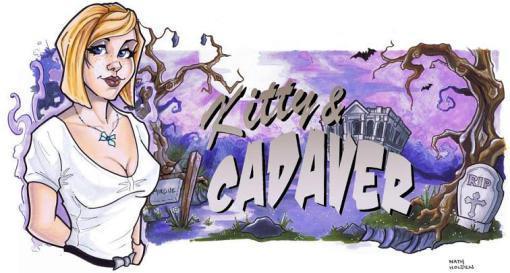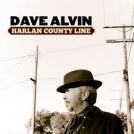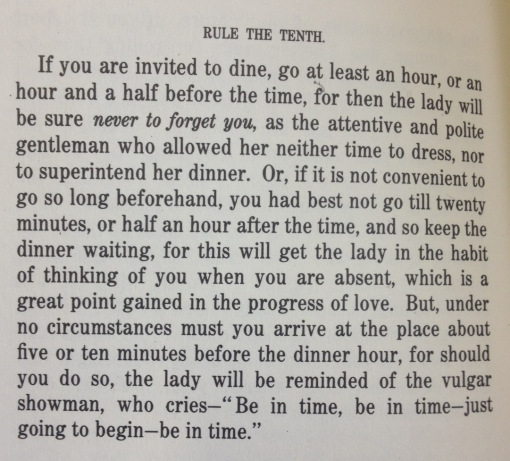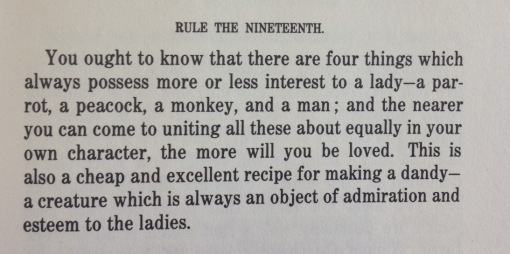Narrelle M. Harris's Blog, page 33
July 13, 2014
Lost and Found 8: Journey
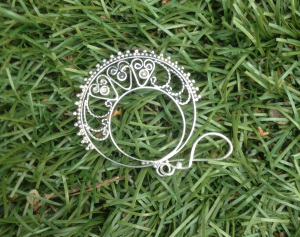 Everyone thinks Journey is a bit dizzy, a bit flaky, a bit of a hippy. (Her name doesn’t really help.) They think this almost like it’s a bad thing.
Everyone thinks Journey is a bit dizzy, a bit flaky, a bit of a hippy. (Her name doesn’t really help.) They think this almost like it’s a bad thing.
People like her, it’s true – in that abstract way that most of them like summer, or a glass of water when they feel quite thirsty, or a starlit night sky, which they only look at once in a while and think it’s pretty but then go on with whatever they were doing before they looked up into the diamond-studded infinite.
People like Journey almost like it’s a habit, and one that refreshes, but doesn’t linger for long. She seems apart from them somehow. She seems like she knows something that they don’t. She acts like she has the key to uncomplicated happiness.
Maybe that’s the problem. Maybe the people who like her are a bit jealous. They don’t know how to let go of worry. They’re never quite content with who they are and where they are; all too busy being distracted by the concern of what now? what next?
It’s not like Journey radiates an over-the-top, sing-in-the-street, look-mum-I’m-dancing joy. She just seems content with her lot, though distracted in thoughts of, not what next, but this right here right now is kind of lovely.
Journey likes natural fabrics and fresh, organic food and jewellery of pure silver that jangles when she walks. She likes the way cats purr and the vibration travels from their tiny bodies right into her hands when she strokes them and calls them sweet little kitty. She likes how bees are fuzzy and how oranges sometimes squirt you in the eye when you bite into them and the sound of horse hooves on the tarmac of the city street and the ding of the tram bell and the squeal of kids running through the fountain in front of the casino in summer.
She likes rain on her arms and wind in her dark hair. She likes the sun on her face, and that her dark brown skin doesn’t burn.
Journey likes walking everywhere. She likes stopping to smell the flowers in a very literal sense. She’s been known to stop and smell grass.
And she likes all these things in a low-key way. She’s not all manic-pixie-dreamgirl about them, despite her name and the tinkling silver jewellery. It all simply makes her calm and mindful and content.
Here’s a secret.
It’s true. Journey does know something that other people don’t know.
She knows what comes next. Came next. Will be next.
Grammar is difficult when you are living in your own past; when you’re a grain of the future stranded back in the time Before (but you are still the Yet To Be for the environment you inhabit, for the acquaintances who like you but don’t know anything about you).
Journey knows a lot about quantum physics and the machine powered by an entire sun that sent her back to gather data. Her understanding of climate change is very good too – all the survivors, rather belatedly, have a good understanding of the stupidity humanity did to itself.
The machines in Journey’s head and skeleton interact with the ones she wears on her body to send vital data through space and also time. Earrings and bracelets of silver (and many other things) make her whole body a transmitter to her lost future as they try to work out how to save the little of the world they still have. (In the meantime, the survivors have transplanted to the moon, a staging place before they take themselves to other barren landscapes further from the sun if they can’t work out how to get the drowned Earth back.)
Six years after arriving through a tunnel of improbability and bent light, the transmitter is still transmitting.
The receiver broke, though, six months after her arrival. A man wanted to take something she wasn’t interested in giving, and he grabbed her and insisted on having what he wanted.
Journey broke his arm in three places, four of his ribs, and his neck. The parts of his body were weighed down and went into the river. Journey feels a little bad about the death, but where she comes from, he and everyone around her died hundreds of years ago, so it doesn’t bother her too much.
Journey is surrounded by ghosts, in many ways. Some of these fleshly ghosts are awful, frightening things. Some are sweet or kind or funny. None of them know their fate, but Journey does, so mostly she is willing to offer the benefit of the doubt. She’ll live and let live because they’re all dead, but they don’t know it yet.
Journey didn’t realise the receiver had been snapped from her ear in the struggle until later, and then she couldn’t find the missing piece. Perhaps she could have repaired it, but she decided not to. It was so much more peaceful not to listen to the commands, the directions, the directives. To the envy and the anger and the railing against the people who appeared all so unwittingly in her transmissions, who were partly at fault for the Death of the Earth by Flood and Fire.
Journey knows that each individual couldn’t do much to stop it, and she knows that collectively, humans are a bit thick.
She has been inhabiting her past, creeping towards a future she won’t live to see again, and she likes it here.
Journey likes that she can’t go home. She likes that she’ll never hear those strident voices through the receiver again. She likes that she still sends them data – it’s a relief that it was not the transmitter that was lost – but she loves that they cannot summon her home.
Good luck to them, if they think the data will save them somehow. She’s sad for the future, of course – for what they’ve lost and what they’ll never have, living on their island of rock, gazing down at the blue ball that used to be humanity’s home.
She used to be like them, salvaging hope from the away teams that go (went, will go) to salvage scraps from the ball of water and wasteland that once housed a trillion life forms. The fraction that remain are all caged in some way. Animals and insects in the great Moon Zoo – too many slowly dying off because the gravity and the air are all wrong. Plants in greenhouses, and no-one can predict yet which will thrive and which will fail.
Not to mention the people. In their domes and in their environment suits that don’t always work. Humanity is ingenous at survival but also, it seems, at self immolation. The individual will to live is nothing like the collective lunacy that convinces people that someone else will fix it.
But here, in the past full of ghosts, Journey already knows that no-one fixed it. She already knows the limited life that awaits the survivors.
So Journey goes through her ghost life, enjoying every simple pleasure before it’s burned or drowned, and she breathes the open air and is content to just be in the moment.
After all – what could she possible do? She’s just one woman. She can’t change the future alone, and collective humanity won’t listen to her if she tries.
Because if it were possible, surely she’d have done it.
Lost and Found is an irregular series of posts about random items I find abandoned on the streets and the stories I make of them.
Narrelle M Harris is a Melbourne-based writer. Find out more about her books, smartphone apps, public speaking and other activities at www.narrellemharris.com.


June 30, 2014
The Cannibal Writer
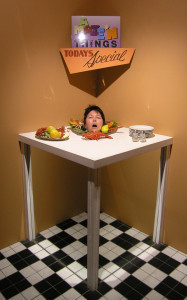
The Cannibal Writer
First of all, I tender my apologies for the length of time between blog posts. The last few months have been fraught not only with a lot of work, but with a lot of family drama that has swallowed up my writing energy even when I had the time.
At the risk of sounding like an appalling human being… at least all of the drama will someday be worth the pain when it gets mulched, ferments and comes back out somewhere and in some form in a story.
Because that’s part of what writers do. It’s not the only thing we do, of course. We don’t only make stories from our own experiences. Our own joy and our own pain. No. Sometimes we make stories out of the pain and joy that we observe in others too.
We sound awful, don’t we?
But part of what it is for me to be human (I can’t speak for anyone else) is making sense of my world, both observed and experienced, through my words. I tell stories to explore the universe in which I’m immersed, and this ship of flesh and bone in which I navigate that universe.
My writing is filled with the things I’ve learned, or am curious about, or am hopelessly ignorant about but hope to become less so, as I burrow into motivation, unpack detail, peer at the nuances of my own reactions and guess at the motivation and reactions of others.
I do sometimes put people directly into stories but mostly, I dismember myself and others to build characters and situations. I make a great big soup out of my life and splash select parts of it onto the page to tell stories to myself first, and later to others, about the enormous, complex beauty and terror that being human can be.
I know already of something that happened last week that will find a way into my stories.
Walking along a hospital corridor with my youngest brother as we accompanied my ill mother into an operating theatre to have her broken hip repaired, we were filled with anxiety and grief, because the surgery was risky but the only option.
But we were haunted down that corridor by the clacking of my mother’s false teeth in a plastic box, which I promised her I’d keep in my pocket so they wouldn’t get lost. It was like we were being followed by a ghost right out of a schlocky Victorian-era horror novel.
In one of the most emotionally intense moments of our lives, we kept giggling – because life is filled with tragedy but also absurdity, and often at the same time.
(Oh, and spoiler alert: My mother came through the operation and is getting stronger every day. She also got her teeth back.)
Narrelle M Harris is a Melbourne-based writer. Find out more about her books, smartphone apps, public speaking and other activities at www.narrellemharris.com.


May 10, 2014
The Wearable Blog: Introducing Collective Tee
 One Sunday in March, I was walking through a little market in Fitzroy and saw a table full of unusual T-shirts. On the fronts were some cool designs, and on the back of each was… a blog post.
One Sunday in March, I was walking through a little market in Fitzroy and saw a table full of unusual T-shirts. On the fronts were some cool designs, and on the back of each was… a blog post.
Fascinated, I spoke to stallkeeper Jason Scully, one of the creative people behind the idea of taking blogs out of the the digital space and putting them onto the backs of readers in the walking world.
Jason has kindly answered a whole bunch of questions about this fascinating concept in writing.
Tell me about Collective Tee
Collective Tee is a Melbourne based street-wear brand that is redefining the humble T-shirt. We are a social experiment, creating a unique garment that changes the way people connect with those around them using the ubiquitous T-shirt. We start with a story. An engaging story that we hope people will want to share time and time again. We then take the story to one of our many designers. The chosen designer then interprets that story and that design becomes the front of the t-shirt. We also print the story on the inside of the t-shirt so that there is a story literally behind every Collective Tee.
How did you get the idea for a wearable blog? Was it cumulative or did you have a big lightbulb moment?
I was walking down the street one day wearing a t-shirt with Bruce Lee on it. I was stopped by a guy who asked, “Hey, did you know that it was Bruce Lee’s birthday yesterday?”. All I could say in response was, “Erm – no but thanks”. That made me wish that I knew more about the design behind my t-shirt. I wish I knew more about who the designer was and what did the design mean. I wish I had more to say to that random Bruce Lee fan on the street. That was how I decided to print a T-shirt which has a story literally behind each T-shirt. Hence Collective Tee was born.
 How do you expect the T-shirts to work out in the world? Will people sit still while friends read their backs, for example?
How do you expect the T-shirts to work out in the world? Will people sit still while friends read their backs, for example?
The aim is that people will only talk about the story when other people ask about their T-shirt. It is about starting a dialogue or conversion that will usually start with the words “Hey, Nice T-shirt”.
We like that only the person wearing the Collective Tee knows the story so that they can decide how they share the story. They can make the story their own and inject their own personality or spin on the story. Also, we have had some people come up to us and say that the inside looks so cool they would be happy to wear the t-shirts inside out. I told them – go for it!!
What criteria do you have for blog topics?
Our blog posts or stories have to satisfy three simple criteria:
Firstly, they have to be entertaining. For example, the stories can be funny or thought provoking.
They have to be engaging. People must want to tell them over and over again; and
Lastly, we have to be able to visualise the story as an awesome t-shirt.
This simple criteria so far has led to us producing some truly unique t-shirt designs.
Who does the art for the shirts? How did they get involved in the project?
A different designer designs each Collective Tee. Our designers are located in all parts of the world. Designers in the UK, Indonesia, Italy and Malaysia have designed our first few issues. We choose the designers based on their past designs and on whether we think that the story will resonate with them. We like that a different designer designs each issue as this gives our designs a wealth of different styles and viewpoints. However, each Collective Tee is produced right here in Melbourne so that we can support local business.
We are always looking for new designers and are more than happy for designers to contact us. When we have a story or blog post that is suitable for that designer we will generally contact the designer to see if they are interested.
What do you see as the ultimate goal of the project?
Here at Collective Tee head office we have noticed the growing trend for social interactions to only happen online through social media. We want to reverse this and return social interaction to the streets, bars and bus-stops of the world. We feel that Collective Tee is helping achieve this each time the person wearing a Collective Tee shares the story behind their Collective Tee.
We would love to have a collection of Collective Tee stories. We would love it if everyone who has bought or received a Collective Tee as a gift would send through their own Collective Tee story. We want to hear about the people they have met and the conversations they have had because of their Collective Tee. I would like Collective Tee to actually make a difference in the lives of the people who wear Collective Tee.
Visit Collective Tee to see the ‘issues’ to date.
Narrelle M Harris is a Melbourne-based writer. Find out more about her books, smartphone apps, public speaking and other activities at www.narrellemharris.com.


May 7, 2014
What We Do in the Shadows
April 17, 2014
Recent publications: erotica, essays and scars
 The last few months have been good to me, writing wise, with a couple of things published.
The last few months have been good to me, writing wise, with a couple of things published.
Scar Tissue
One is a story about life and the scars it gives us. It’s a complete departure from form, as it’s non-genre and not romance either. Scar Tissue is still a love story of sorts, but it’s about family and redemption. Like so many of my stories are. You can read it in issue #49 of online magazine Mildred.
Read Scar Tissue in Mildred #49
Homecoming
Two other stories are in my expanding (I was about to write ‘burgeoning’) field of erotic romance.
(I’ve now that I’ve started writing erotica that everything I write has a double meaning, and not always a subtle one. To quote Tom Lehrer, ‘When correctly viewed, everything is lewd’.)
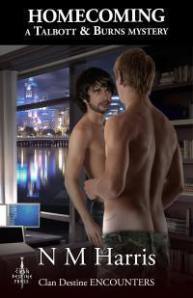 So, in March 2014 (in time for the Queermance festival) my M/M adventure/romance Homecoming was released by Clan Destine Press. Some nice reviews of it so far include:
So, in March 2014 (in time for the Queermance festival) my M/M adventure/romance Homecoming was released by Clan Destine Press. Some nice reviews of it so far include:
“The author truly excels at capturing the emotional components of intimacy along with the physical aspects. I can foresee many more adventures for these two with no danger of them becoming tired of each other or boring the reader. They have wit and charm enough to take them (and us!) through many more adventures.” – Lin S – Amazon.com
“‘Passion and adventure together’ is absolutely right. Sweet and sexy story with lovely writing and some dangerous crime-solving as well! Both the leads are incredibly appealing: the steady protector Jack and the willowy and joke-cracking but secretly vulnerable Elliot. But the best part is what a good team they are, both in their investigations and in bed, and how much they care for and adore each other. Lots of fun. Highly recommended!” – Shadowphoenixfire – Goodreads
“I always enjoy Relle’s Australian settings, which are fair dinkum while remaining distinctly urban. There’s always a real feel of life as it is lived in Australia today. Her characters are interestingly layered as individuals and well juxtaposed as a pairing. Her plot, meanwhile, keeps the pages turning.” – Julie Bozza – Goodreads
So that’s very lovely. If you want to get it (and it’s only a few dollars), Homecoming (A Talbott & Burns Mystery) is now available at:
Clan Destine Press
Homecoming: a Talbott & Burns mystery (Clandestine Encounters)
 (Amazon)
(Amazon)Kobo
Smashwords
Late Bloomer
 Another M/M story is in the Queermance anthology, where I share digital pages with writers like Kerry Greenwood and Matthew Lang. Late Bloomer is the story of a rather melancholy judge, his night-blooming garden and his gardener, Jake.
Another M/M story is in the Queermance anthology, where I share digital pages with writers like Kerry Greenwood and Matthew Lang. Late Bloomer is the story of a rather melancholy judge, his night-blooming garden and his gardener, Jake.
Queermance Anthology Vol 1 is available at:
Clan Destine Press/Encounters
Q: Queermance Volume 1
 (Amazon)
(Amazon)Smashwords
Sex and Intimacy
If you’re interested in how I approach writing erotic romance and sex scenes, I wrote about Sex and Intimacy for the Queensland Writers Centre in March in issue 237 of their magazine.
Kitty and Cadaver
I’m also still publishing Kitty & Cadaver online – the entire book is written and the last part is scheduled to go up on 2 June. I’ll be looking for a publisher after that, and if/when it’s accepted the story part of the site will come down – so go over there and read it (and leave comments) while you can!
Narrelle M Harris is a Melbourne-based writer. Find out more about her books, smartphone apps, public speaking and other activities at www.narrellemharris.com.


April 16, 2014
The Peacemaker Playlist – guest post by Marianne de Pierres
A lot of writers listen to a particular set of songs while writing a specific book. It helps to set the mood while writing and can sometimes influence a little of what’s going on.
With Marianne de Pierres’ new book Peacemaker out soon, I asked her to share the playlist she listened to while writing.
The soundtracks that authors compile while writing novels are often quite revealing: better, at times, than an interview. Thanks to Spotify, you can now hear PEACEMAKER soundtrack in all its quaint glory. My dad would approve!
Wild, Wild West – The Escape Club
Riders on the Storm – The Doors
Timber – Pitbull/Kesha
Rawhide – Frankie Laine
Harlan County Line – Dane Alvin
Bad Things – Jace Everett
Saving Grace – Everlast
They Call the Wind Mariah – Paint Your Wagon
 The Gospel of No Name City – Paint Your Wagon
The Gospel of No Name City – Paint Your Wagon
There’s a Coach Coming In – Paint Your Wagon
Counting Stars – OneRepublic
Royals – Lorde
Sitting on the Dock of the Bay – Otis Redding
 Peacemaker will be released as an e-book on 29 April 2014. Check out Angry Robot for links and the print book release dates!
Peacemaker will be released as an e-book on 29 April 2014. Check out Angry Robot for links and the print book release dates!Read Marianne’s post on writing Peacemaker the book versus Peacemaker the comic book at my Kitty and Cadaver blog.
Do you listen to music when you write? What playlists have you got for your books?
Narrelle M Harris is a Melbourne-based writer. Find out more about her books, smartphone apps, public speaking and other activities at www.narrellemharris.com.
April 9, 2014
The Secret Life of Dashes
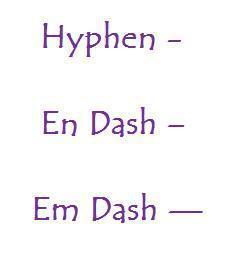 I was explaining the difference between hyphens, en dashes and em dashes the other day, and the recipient of my edited-for-brevity wisdom suggested I should blog it, as it was the first time she’s understood the differences.
I was explaining the difference between hyphens, en dashes and em dashes the other day, and the recipient of my edited-for-brevity wisdom suggested I should blog it, as it was the first time she’s understood the differences.
So here it is. It’s certainly not comprehensive – the hyphen has a number of rules, all of which you can disover at Purdue University’s handy OWL site.
But here’s a quick rundown on the hyphen, the en dash and the em dash for everyday, contemporary use.
The hyphen is only used to combine words into a compound word, or to add prefixes to terms for clarity.
Some juice company wants you to buy a rubbish-free lunch, as opposed to a rubbish free lunch (that is, a free lunch that is rubbish).
Students benefit from one-one-one time.
Note that hyphens are not needed when combining an -ly adverb with an adjective.
Golf is sometimes played with a brightly coloured ball.
The en dash (so-named because it was originally the same width as a printer’s capital N) is usually used to separate number ranges and has a space on either side. The keyboard command (using the number pad) is ALT 0150.
Turn to pages 16 – 18.
In online texts, the en dash is also often used in place of the em dash to separate words or sub-clauses that might otherwise be separated using brackets or commas, and to add emphasis to the item following the dash.
I used to live in Canberra, if you call that living.
I used to live in Canberra – if you call that living.
Canberra’s environment offers outdoor activities (bushwalking, bird-watching, rock climbing) for the brave and bored.
Canberra’s environment offers outdoor activities – bushwalking, bird-watching, rock climbing – for the brave and bored.
The em dash (which was the width of a printer’s capital M) is used without a space on either side and generally separates words or clauses. As with the en dash, it often adds emphasis to the word or phrase following the dash. This dash is much less commonly used in online texts these days, as it’s considered harder to read on screens. The keyboard command is ALT 0151.
I used to live in Canberra—if you call that living.
Canberra’s environment offers outdoor activities—bushwalking, bird-watching, rock climbing—for the brave and bored.
This is a very broad guide and is certainly not definitive. The use of dashes might vary depending on the style guide for your company/publisher too – but this’ll do for starters.
Narrelle M Harris is a Melbourne-based writer. Find out more about her books, smartphone apps, public speaking and other activities at www.narrellemharris.com.


March 20, 2014
Night Terrace’s Adventurous Woman by Ben McKenzie
 Recently, I’ve been very excited by a new Kickstarter project – the SF comedy radio serial Night Terrace (made by the creators of the Splendid Chaps podcasts), about Anastasia Black (Jackie Woodburne of Neighbours fame) a retired world-saving adventurer who finds her quiet life irritatingly interrupted when her house starts inexplicably travelling through space and time. Stuck with her (or indeed the other way around) is Eddie Jones (Ben McKenzie), who was trying to sell her something at the time.
Recently, I’ve been very excited by a new Kickstarter project – the SF comedy radio serial Night Terrace (made by the creators of the Splendid Chaps podcasts), about Anastasia Black (Jackie Woodburne of Neighbours fame) a retired world-saving adventurer who finds her quiet life irritatingly interrupted when her house starts inexplicably travelling through space and time. Stuck with her (or indeed the other way around) is Eddie Jones (Ben McKenzie), who was trying to sell her something at the time.
Of course, the show needs funding first!
The makers of the Night Terrace radio series knew from the start that they wanted their lead character to be an adventuring woman. Ben McKenzie – actor, writer and co-producer of the series – writes about why.
Read on! (or skip straight to pledging support for Night Terrace at Kickstarter.)
Night Terrace’s Adventurous Woman
When we started to work out Night Terrace, the Chaps wanted to make a show that was unique but Doctor Who-esque: a versatile travelling narrative based around a central hero, more “smarts and adventure” than “violence and action”. We all thought it would be great to have a female Doctor, and we’re among those were a little disappointed that Twelve is still a man (though we are quite excited about Peter Capaldi). But why wait for the BBC to get with the times? “Female protagonist” was one of the first things to go on the list of ingredients that eventually became Night Terrace.
But why does it feel so important to have a female character who’s Doctorish?
For starters, the Doctor is a character with unprecedented freedom. He travels wherever and whenever he likes. He does what’s right where he can, but not out of obligation (unlike Starfleet Captains, for example, who are bound by duty and their jobs). On the whole he’s never been tied down with responsibilities of family and he needs no further motivation than being intrigued or enjoying himself. Even his love life allows him to wander. His relationship with River Song, whatever else it might be, is clearly at both of their convenience.
Other male characters have similar freedom, like Hercules or MacGuyver, but female genre heroes always have to justify their status as adventurers.
Xena is trying to atone for past wrongs; Buffy has been chosen by fate (and is trying to live a normal life alongside her role as Slayer); Helen Magnus was initiated into the family business by her father; Lara Croft had a traumatic experience in her youth which leads her to seek out danger. A woman who travels and has adventures “just because” bucks the idea that unless she has some kind of excuse, she ought to be settling down and having children.
It’s fair to say that our character, Anastasia Black, isn’t entirely free – her adventures are forced upon her, and initially at least she resents them. But she’s been an adventurer a long time before Night Terrace begins. And despite the interruption to her retirement, she starts to realise that without the red tape of her old job she might actually enjoy saving civilisations and exploring new worlds. Though she’s still learned to be a bit cynical, at her age.
Speaking of age: the Doctor is also old. Sometimes he looks young, but certainly among the Chaps we feel it’s best when a young actor captures that feeling of an old man on the inside. He’s presumably hundreds of years old when he begins his journey – he’s already a grandfather – and yet there’s rarely a sense that he’s too old to cope with adventuring.
Of course the Doctor is a special case, being a nearly immortal Time Lord, but male human adventurers are allowed to be older too. Sean Connery, Harrison Ford, Bruce Willis, Patrick Stewart, Liam Neeson and Ian McKellan didn’t stop at 40. It’s only very recently that older women have been allowed adventures: Helen Mirren in RED, Judi Dench as 007’s boss M, or Amanda Redman in New Tricks. Like them, Anastasia is of retirement age, but she’s not slowing down or stopping until she wants to.
But perhaps most importantly, the Doctor is a brain-hero at least as much as a fists-hero (or so we like to think of him, despite all evidence to the contrary). Such heroes are fairly thin on the ground, but among female characters they seem even less likely. Xena, Buffy, Lara Croft and the others are all arse-kickers; even Captain Janeway is a fairly ruthless starship captain by Starfleet standards, more Kirk than Picard, and most of the time she has people to do the science for her (though it’s worth noting both B’Lanna Torres and 7 of 9 are sciencey and can kick arse when required).
Helen Magnus of Sanctuary is probably the only counter-example, and indeed she has some other Doctorish qualities as well.
So we’ve put all these traits into Anastasia. She’s a trained scientist with decades of field experience studying unusual phenomena. If the Third Doctor had never shown up and Liz Shaw had stayed with UNIT for thirty years, she might have ended up like Anastasia: brilliant, capable, knowledgable, and sick of working for The Man. She’s a real pleasure to write for, she’ll be played by the brilliant Jackie Woodburne and I can’t wait for all of you to meet her.
- Ben McKenzie
WHAT IS NIGHT TERRACE?
Night Terrace is a new audio comedy from the minds behind ABC1′s Outland, ABC2′s Bazura Project and the hit podcast Splendid Chaps. It follows the adventures of Anastasia Black (played by Neighbours veteran Jackie Woodburne), who used to save the world for the government but now just wants a quiet life in retirement. So when her house inexplicably starts travelling in time and space she’s understandably miffed. She’s also not exactly thrilled about Eddie Jones, who happened to be on her doorstep at the time and is now her unlikely fellow traveller. University hasn’t prepared Eddie to cope with other worlds or time paradoxes, but he still thinks they’re a step up from selling electricity plans door-to-door.
Together Anastasia and Eddie will face alien invasions, hideous monsters, and a shadowy figure known only as “Sue”. All the while hoping the house will eventually take them home…
The team are crowdfunding the first series of Night Terrace right now. Jane Badler, chanteuse and actress (the original Diana of the original V!) is also slated for a role if the show is funded. They’re getting close to their target – and you can help them reach their funding goal at Kickstarter. I have a Key to the Terrace, but if you’re really keen you can be listed as a producer!
Who are your favourite female lead characters in TV, film or books? Feel free to leave a comment!
Narrelle M Harris is a Melbourne-based writer. Find out more about her books, smartphone apps, public speaking and other activities at www.narrellemharris.com.


March 11, 2014
Cranky Ladies: Lola Montez and The Arts of Beauty
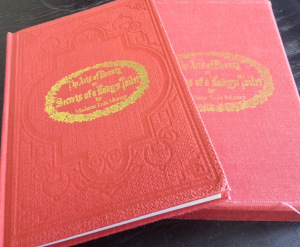 In March, I am writing about some Cranky Ladies of History across my Kitty and Cadaver, Mortal Words and Adventurous Hearts blogs, in honour and support of the Cranky Ladies of History anthology Pozible campaign. The contents of the book haven’t been finalised, but the anthology has submissions from amazing writers like Karen Healey, Jane Yolen, Rob Shearman, Foz Meadows, Kirstyn McDermott, Garth Nix and Deborah Biancotti!
In March, I am writing about some Cranky Ladies of History across my Kitty and Cadaver, Mortal Words and Adventurous Hearts blogs, in honour and support of the Cranky Ladies of History anthology Pozible campaign. The contents of the book haven’t been finalised, but the anthology has submissions from amazing writers like Karen Healey, Jane Yolen, Rob Shearman, Foz Meadows, Kirstyn McDermott, Garth Nix and Deborah Biancotti!
I’d heard of Lola Montez in vague terms before my brother sent me the Bruce Seymour biography of this fascinating woman for my birthday one year. (His inscription to me reads in part: ‘The story of one amazing and outrageous woman as a gift for another amazing and outrageous one‘ – my brothers say the best things about me!)
Lola Montez was born a middle class Brit, but passed herself off as a Spanish dancer. In her short life, she scandalised society with her dancing, took a horsewhip to a detractor, berated an audience for cowardice as a theatre burned around her, wrote a book, probably inspired a character in the Sherlock Holmes stories, brought down a government and pretty much lived her own damned life, thank you very much.
Bruce Seymour’s fabulous biography, Lola Montez: A Life covers these astonishing years with detail and flair, including that fascinating period where she was the mistress of the King of Bavaria, and her influence was considered so dangerous that a revolution resulted. (Well, the 1850s were rife with that kind of thing, but she was certainly a flame to the tinder.)
As a dancer and performer with links to a German monarch, it’s no wonder that many believe she was an inspiration for the character of Irene Adler in Arthur Conan Doyle’s A Scandal in Bohemia, although Sarah Bernhardt and Lillie Langtry are among the contenders for that honour.
She came to Australia too, and it was at a theatre in Bendigo that had been hit with ball lightning where she made her famous (and possibly apocryphal) stand against the fleeing audience. Her spider dance (where she stomped about and looked for a spider in her skirts) made her popular on the goldfields, and the incident with the horsewhip is noted to this day in one of the daily reenactments at Ballarat’s Sovereign Hill.
Lola was the Pink of her day – the Bad Girl, the wicked celebrity, confident in her own power and shocking everyone from London to the antipodes. Her ending is sad, alas, but her life was one big middle finger to the world.
She also wrote a book, published not long before her death, called The Arts of Beauty, or Secrets of a Lady’s Toilet, with Hints to Gentlemen on the Arts of Fascinating. I was delighted to find a 1982 reproduction of the 1858 edition one year at Clunes Booktown Festival. The little tome is full of actually quite sensible advice on being active and healthy, eating well, not keeping late hours, exercising restraint with the make-up and beauty treatments, and developing one’s mind as well as one’s body to have the necessary grace and inner beauty.
Still, she notes that most men of her time spoke disparagingly of a woman’s intellect, but would get rhapsodical over their looks, and thus encourages the development of your beauty in order to find a good husband.
“Preach to the contrary as you may, there still stands the eternal fact, that the world has yet allowed no higher ‘mission’ to woman, than to be beautiful.”
There’s a certain snark inherent in the observation, but her advice and tips on maintaining one’s natural vivacity and beauty are sincere enough.
But, ho! The layers and layers of snark in the 50 tips she gives men on The Art of Fascinating! I can’t help but think she encountered a lot of boorish behaviour in her time, and she presents all the worst examples of such in a sly and sarcastic litany of how men should behave if they wish to win a lady.
For example:
and this:
And there’s this:
And her concluding remarks:
Ah, Lola. Something tells me you have had it to the back teeth with badly behaved fellows.
She tries to take some of the sting out of the list in her forword.
“The Hints…I am sure, will prove amusing to the ladies. And I shall be disappointed if it fails to be a useful and instructive lesson to the other gender. The men have been laughing, I know not how many thousands of years, at the vanity of women, and if the women have not been able to return the compliment, and laugh at the vanity on the other side of the house, it is only because they have been wanting in a proper knowledge of the bearded gender.”
 Lola, you magnificent Cranky Lady of History, I’m sorry things ended badly for you (and that in many ways you were a hot mess from start to finish) but I still think you were terrific. I’m proud that my brother saw you, and thought of me.
Lola, you magnificent Cranky Lady of History, I’m sorry things ended badly for you (and that in many ways you were a hot mess from start to finish) but I still think you were terrific. I’m proud that my brother saw you, and thought of me.
Visit the Cranky Ladies of History Pozible campaign and pledge your support
Read about Euphemia Allen and the Chopsticks Waltz.
Buy Lola Montez: A Life
 by Bruce Seymour in paperback (Amazon)
by Bruce Seymour in paperback (Amazon)Buy The Arts of Beauty
 by Lola Montez (Amazon)
by Lola Montez (Amazon)What cranky ladies of history do you admire? Please comment and share the joy!
Narrelle M Harris is a Melbourne-based writer. Find out more about her books, smartphone apps, public speaking and other activities at www.narrellemharris.com.


March 4, 2014
The Potency of Vampires
 Today’s guest blog is by Kevin Powe. Kevin is an international voice actor based in Melbourne, Australia. He’s been the voice of Judge Dredd, a farm of singing animals, a daemonic e-sports announcer and much more. He is currently developing an animated series. He loves great stories in all forms, and things that go bump in the night, in every sense of the word. You can find Kevin being most active over at his Facebook page. Come say hi!
Today’s guest blog is by Kevin Powe. Kevin is an international voice actor based in Melbourne, Australia. He’s been the voice of Judge Dredd, a farm of singing animals, a daemonic e-sports announcer and much more. He is currently developing an animated series. He loves great stories in all forms, and things that go bump in the night, in every sense of the word. You can find Kevin being most active over at his Facebook page. Come say hi!
I remember my first real experience with the potency of vampires. I’d had glimpses before; shadowy figures flickering at the edge of my awareness; cheerful Peter Pan-like monsters lurking in collapsed hotels, but it was only hunting this sickness back to its origin, Van Helsing style, and reading Bram Stoker’s Dracula that really drove it home.
I’ve always loved the implied morality tale in vampires being trouble brought upon yourself, literally by invitation into your home. But it was in that amazing, horrifying scene with Dracula at the foot of Jonathan and Lucy’s bed that I saw them as the ultimate transgressor; a predator faster, stronger and more mysterious than any of its hunters, and so erotically charged.
Reading back over the scene to refresh my memory while writing this post, I was surprised to see the eroticism in the imagery; that terrible inversion of breastfeeding as an invasion of Lucy’s body in such a private place, rather than in any magnetism inherent in Dracula himself. Unf. So many layers.
Vampires have been bestial and unthinking for us, regal and reclusive, erotic and irresistible, have stood in for our fear of AIDS, fear of death, of stagnation, of our own free will unchecked, our looming energy crisis. They’ve even been creepy, relatively gormless eternal companions who love baseball.
It’s such a fertile ground for variation, for telling different stories. After picking up a copy of our lovely host Narrelle Harris’ The Opposite of Life finally, I’m really looking forward to tucking into it for exactly that reason. And doubly so for evoking the feeling of Melbourne so strongly. Fiction that slips an awareness of setting and a love of a place you know has a special place in my heart.
If you dig clever, well-crafted writing – and I’m guessing you do, given your perusing of this blog, I would also highly recommend Strange Loves: Vampire Boyfriends by the wonderfabulous Miellyn Fitzwater Barrows. It’s a Gamebook Adventure by Tin Man Games. Gamebook Adventures are a modern update of the old Choose Your Own Adventure or Fighting Fantasy books you might remember from the 80s, where you are an active participant in the story you’re reading, able to make choices that alter the direction the story takes. It’s part story, part game, and you can play/read them on most iOS and Android devices, as well as your computer.
Vampire Boyfriends takes a sly tilt at some of the bigger, crazier vampire stories around, and gives you license to steer your life toward some pretty wild destinations, like becoming a vampire hunter, best-selling novelist, or a vampire yourself. And you get Miellyn’s fantastic writing along the way.
Speaking of which: if you’re of a writerly persuasion (and there’s a strong chance again given that you are given that you’re here) Miellyn is on the cusp of launching Tonic Industries with Hilary Heskett Shapiro, her writing partner (in crime).
Tonic is a story consulting business focusing on helping develop ideas or evolve existing content. It’s not out there yet, but you can keep an eye on Miellyn’s doings over at Gorgeous Robot. I’d highly recommend it as both Miellyn and Hilary are two people who really know their game, and Miellyn is one of the most generous people I know with her wisdom. When preparing for the GenreCon 2013 panel I was on with Narrelle last year, Miellyn sent me some wonderfully comprehensive writing advice that was a huge help to a narrative novice like me!
So, why are vampires on the brain for me currently, when zombies are the monster du jour? * **
Because I’m privileged enough to be given a chance to play in another author’s take on vampires, as I’m currently finishing up an audiobook of Karen Fainges’ Destiny Sets, which has its own unique take on the relationship between vampire and prey. You can find Karen over here. It’s not the first time I’ve had a chance to play in the broader world of vampires, either. My first audiobook was The Keeper back in 2011, which is a wonderful love story that dealt with themes of morality, immortality and companionship in a touching way. (It’s worth warning that the story has some religious elements, which did offend some surprised listeners)
Once you’ve dealt with the challenge of delivering both sides of a fairly descriptive sex scene in an audiobook, it’s difficult to get stumped going forward.
While I love the wild variation of vampires, to me they’re at their most potent as mysterious, sensual predators. Outsiders who are able to move undetected amongst us for a time. A lot like the drifter gunslinger archetype, which I also have a huge soft spot for.
What are vampires when they’re at their best (worst) for you?
FOOTNOTES
* Check out this episode of the GeeksOn podcast for an interesting class-based deconstruction of monster mythology by David Brin
Narrelle M Harris is a Melbourne-based writer. Find out more about her books, smartphone apps, public speaking and other activities at www.narrellemharris.com.






